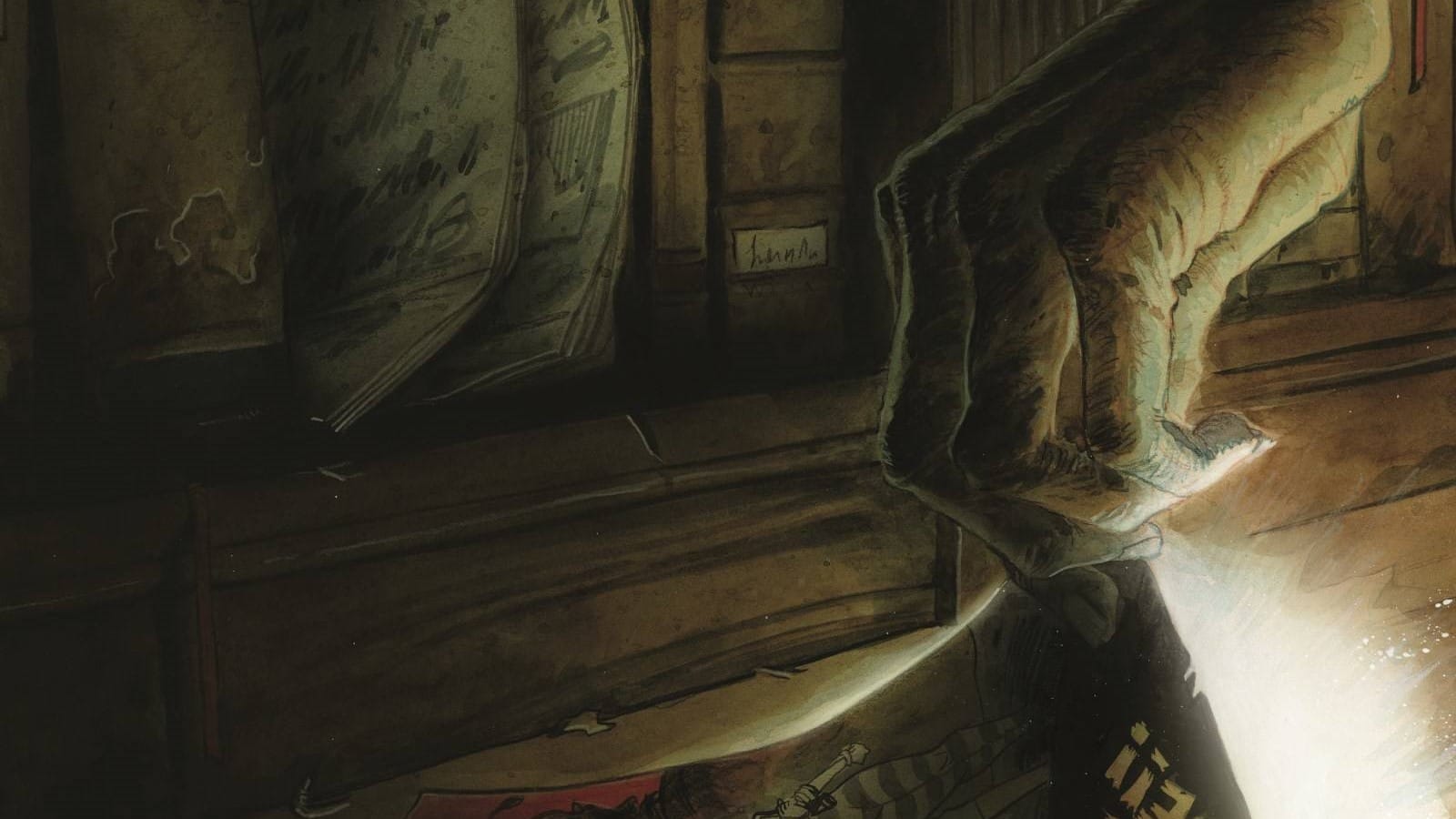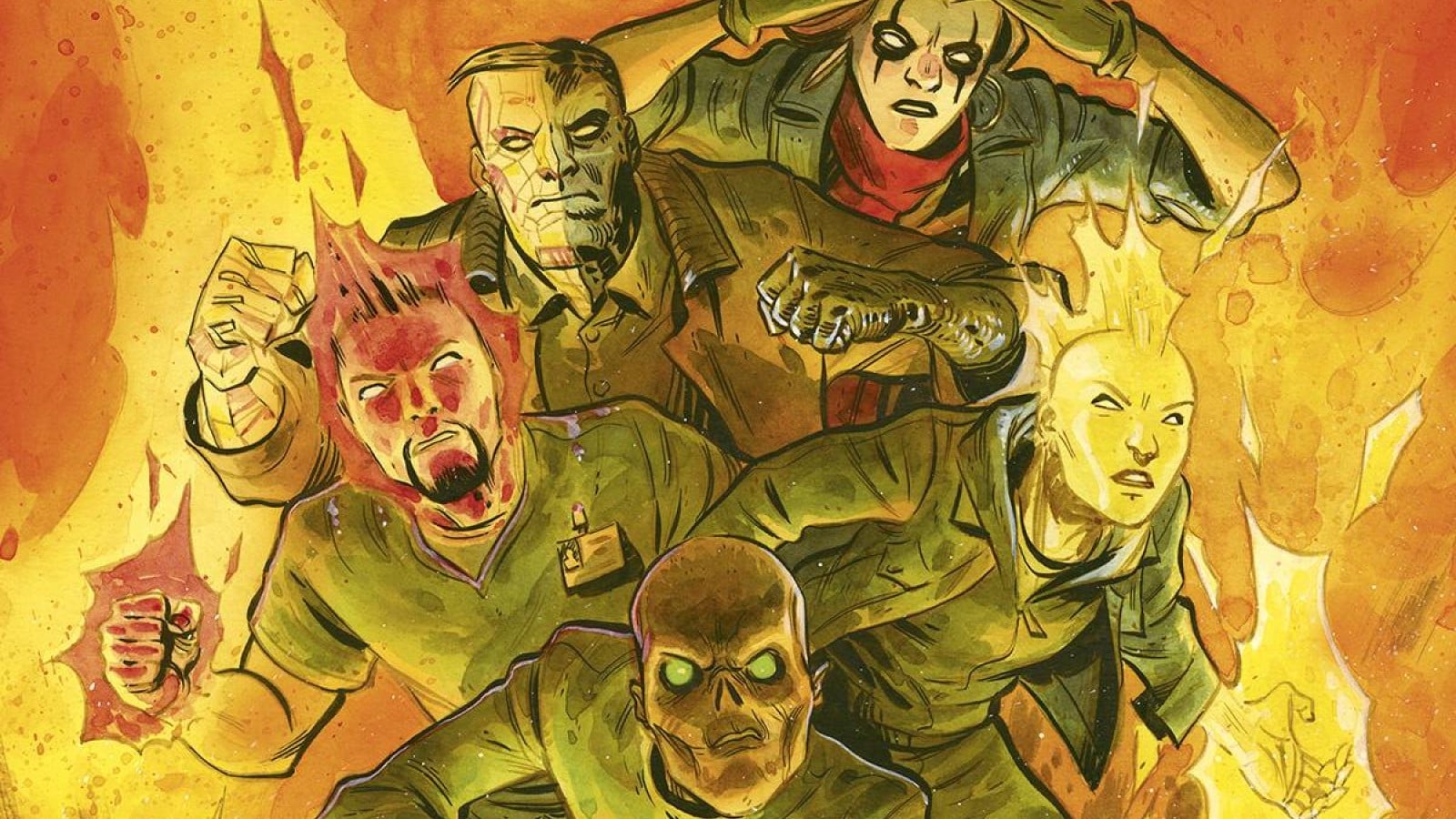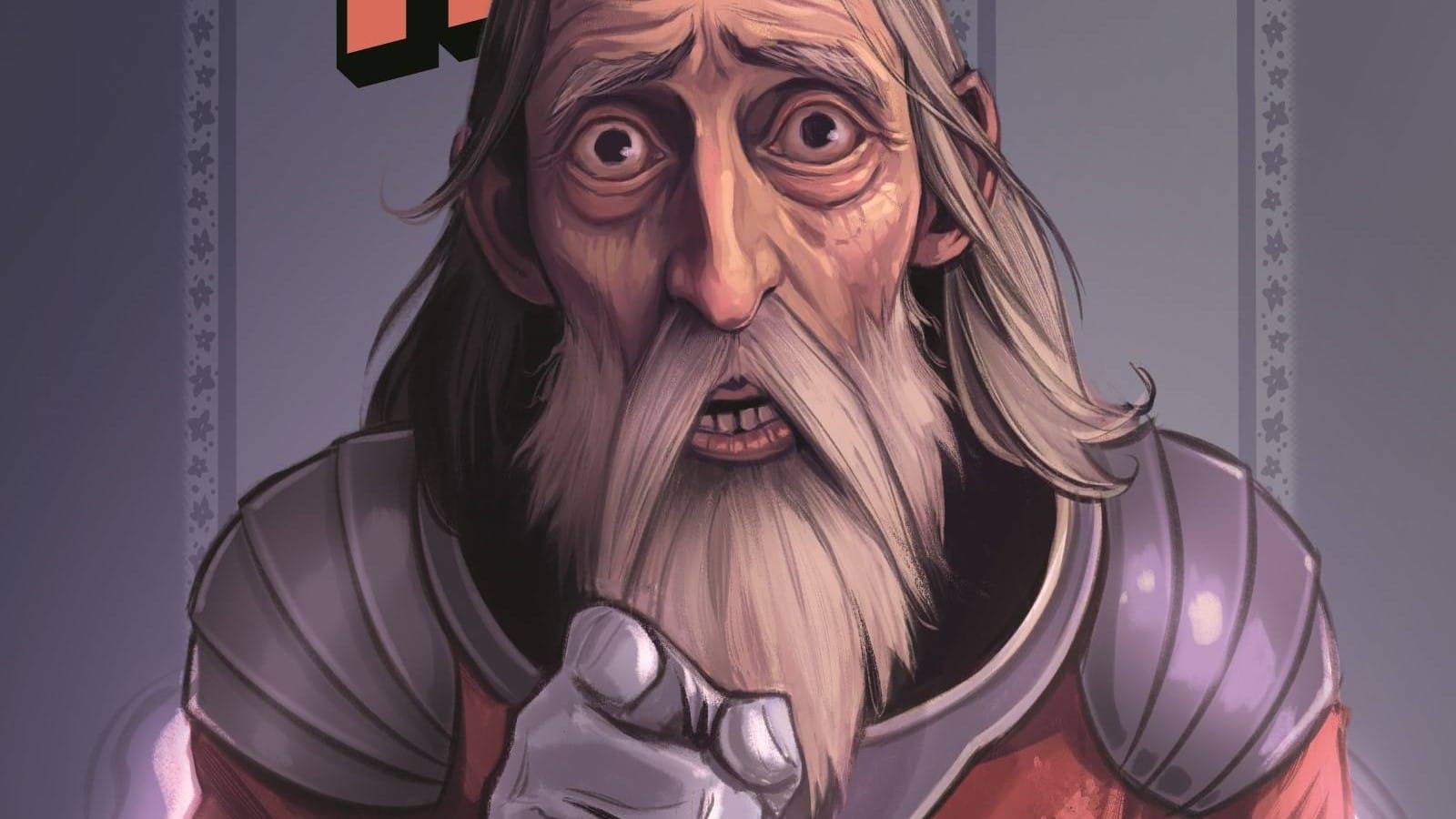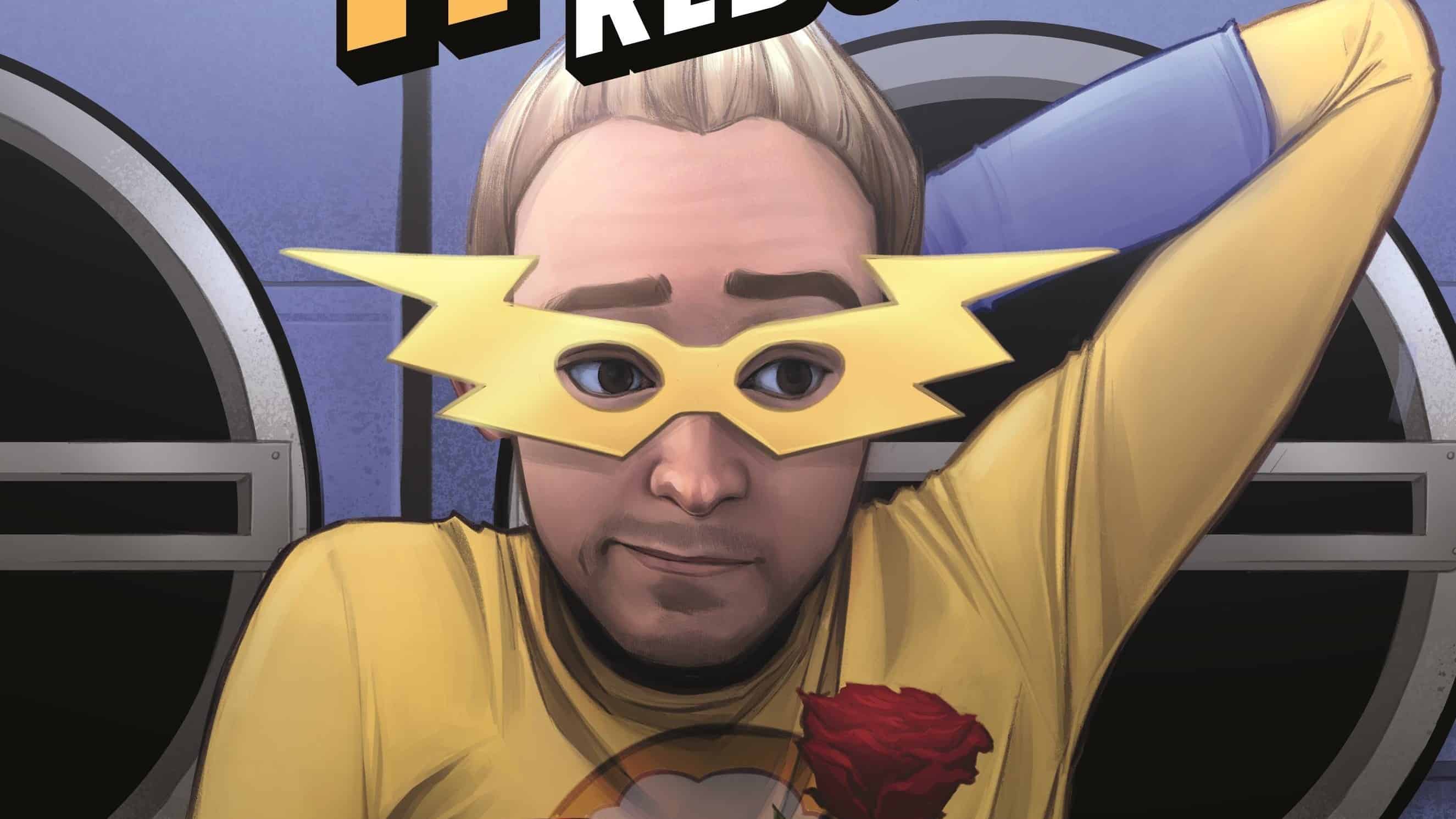Unbelievable Unteens comic book artist Jane Ito finds her world flipped upside down after discovering that the heroes from her comics were not so fictional and she herself was one of them and had powers. As she and the team of underdog heroes once known as the Unteens begin to come back together, they slowly discover what happened to them, why their memories were wiped and who was behind this evil plot. Issue #2 is written by Jeff Lemire and drawn, colored and lettered by Tyler Crook for Dark Horse Comics.
Mark Turetsky: Hey, Ritesh! Vishal is on assignment in the Para-Zone this week, so thanks for volunteering to help out in writing about a universe you feel … shall I say, ambivalence for?
Ritesh Babu: It isn’t quite my turf, no. That said, I do have a great fondness for Tyler Crook’s art. So this ought to be fun. What’d you make of this entry in the never-before-told tale of the Unteens?
Mark: I find this issue somewhat fascinating, because such a huge portion of it is told in these traditional-comic looking (i.e. pencil, ink and colors, as opposed to Crook’s fully painted art) pages. Within the world of the comic, these are actual comic books, telling the story of the Unteens. But what’s really got me thinking is the way in which they’re presented.
If these are truly events as told by Jane, then the inner lives of the other characters (as expressed in their thought balloons) should be her inference as to what they’re thinking, and not what they’re actually thinking. Does that make any sense?
Ritesh: It does! What you’ve got here is not just the story, but the story as viewed/understood and immortalized in comic book form by a comic book artist. We’re reading a work of fiction, which is then revealed to us as actuality. So, certainly, in text, a lot of what’s happening can be read as flourishes and touches added on by Jane. It’s all her perspective packaged as fiction to be sold, because she certainly doesn’t have telepathic power to have grasped all this.
Mark: But on the other hand, we’ve got this storytelling method where Straka is remembering his time as a teen superhero, expressed (quite beautifully) as comics pages exploding out of his head. Now, it’s hard to say how much of this is Crook/Lemire’s flourishes, as you put it. But then you run into this — I don’t want to call it a problem, but it raises questions. To what extent are we to read these as fictionalized memories, and to what extent is this simply the method by which they’re explaining the memories? We are reading a comic, after all, so any storytelling methods will be comic-bookean by their nature. But is this Straka’s lived experience, or are these the literal diegetic pages of Jane Ito’s comics in-world?

I’m not really sure there’s an answer to this concern, but it’s certainly been nibbling at my brainparts since I read the issue.
Ritesh: All your questions are valid and understandable, I think. And I find myself amused, because I never had those questions, because I made a leap immediately. A leap which, as I read what you have to say, I imagine I made because I saw the intent, and I didn’t think beyond it. But you’re right on all counts, and it is worth thinking about. What it comes down to, though, I figure, is this:
This is an enterprise of pastiche. As in, it is about evocation. It is about gesturing. It is about making you think of another thing, or at least leaning strongly with a sense of familiarity with another thing. Whether it be Snapdragon, who feels like a cross between Crazy Jane and Jean Grey, or Doc Moniker, who’s just The Chief/Xavier, or Straka, who is just Not-Colossus. Evocation, riffing, is kind of the name of the game. And as such, the natural leap I made was that given this is a period piece, and was such a blatant pastiche of those old comics, and that’s the point, the presentation was just part of that mode of evocation.
Lemire’s a big DC kid, and the whole fiction/reality relationship reads as his version of the whole “Comics creators are actually penning the reality of another universe” tenet that’s core to DC comics, but situating it within this one reality as opposed to a multiverse, and making it reflect back on the individual, as world from subconscious memory, of times erased from the mind. And given all these riffs, evocations, this overt playfulness and winking, the tacit acknowledgement that this is a comic so reliant on other comics, the presentation and playfulness, with memories spilling out as comic pages, that made sense to me? I didn’t think twice, I think, which is why your response is super interesting to me.
Mark: Let me be perfectly clear, that’s 100% what I came away with on my first reading, and I think it’s entirely how Lemire and Crook want us to read their comic. It’s only because I’ve been sitting with it that these questions came up for me.
Ritesh: They’re very pertinent questions, though, I think, given they speak not to intent and assumptions and automatic leaps, but, plainly, and quite simply, to effect. They’re all concerning the actual effect of the work.
Mark: Exactly. I’m really interested in why precisely this storytelling technique works for a reader. Is it because the reader is sitting passively and letting the story wash over them? Is this simply something that Lemire and Crook don’t expect anyone to think about? I think they’re both effective and affecting storytellers, and I’m in no way asking these questions to put them down. It’s more that it’s fascinating to me how effectively they can get their readers invested enough that they sidestep those questions entirely.

Ritesh: I think what you’re touching on is perhaps the core mechanism of The Pastiche Comic. It works, I think, because the work is written to certain assumptions, both of comics, especially superhero comics, and how they are read, what the readership expects from them. I reckon Lemire and Crook aren’t concerned with anyone potentially having these questions, and even if they did expect folks to think about these notions, I expect they likely moved on fast. In the end their core principle is “We’re doing Comics History. We’re doing Superhero Comics History.” And when you think that, when you think superhero comics history, how do you see it? How do you visualize it? It’s retro work, which is what this aims to deliberately pastiche, like high-res images of a back issue placed on a table. It’s playing to a fundamental assumption/principle and is built off that logic. So you don’t particularly question it. Couched in its evocation, it gets away with a lot that it otherwise would not be able to on purely its own elements, divorced from all gesturing.
Mark: I also wonder … look, I’m going to go ahead and admit I haven’t read much Claremont-era X-Men. I’ve read even less of the Doom Patrol era this nods to. But I’ve absorbed so much of the X-Men stuff just through cultural osmosis, that at a certain point, it kind of doesn’t matter when I read a story like this. I know that it’s pointing toward something like “The Dark Phoenix Saga.” I know, deep down on some level, what it means as a matter of comic book language, even if I haven’t read the ur-text. I’ve seen the adaptations, I’ve read some of the follow-ups. It just becomes a kind of comics cultural signifier that a comic creator only need point to in order for a reader to just nod and say, “Yeah, I get that.” And it’s fascinating to me that it can just work.
Ritesh: You don’t need to have read Superman comics to “get” Irredeemable, for instance. You just need the cultural osmosis of Superman, which is a starter kit of expectations, both in terms of tropes, character dynamics/cast and iconography/visual presentation. The work can take that and go a lot of places.
You needn’t have watched or read any Justice League content to know that Jupiter’s Legacy or The Boys or Invincible are gesturing at them. Cultural osmosis/awareness is what The Pastiche Work banks hard on. It’s all about gaming expectations, because that’s the fundamental “sell” of your work, that it evokes and is akin to something they already know or like or have thoughts on. Its relationship to it in conjunction with that thing they like, that becomes the essential nature of it. It’s also why the actual telling or execution of the story at some point needs a bit of flair if possible, a bit of pop, just something to distinguish it from just being a “lesser” version of that older thing. The goal is “Like that thing, but kinda not.” It’s almost like taking a base product and doing another flavor of it, so it’s mostly the same, but there’s just this wee little variant.
Mark: And here we are. We’ve set out with the expectation of “monthly single issue superhero comic review” and delivered a whole slew of questions about how we’re even supposed to read comics. As always, it’s been a pleasure, Ritesh!
Ritesh: Thank you for having me here, Mark! It was a pleasure!







